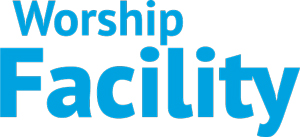During the service, the teaching pastor stepped up to speak. He greeted the audience by saying, “How are you doing tonight?” Awkwardly, he looked around the room to find which camera to talk to. “Greetings to those watching us tonight,” he said. He looked back at the in-person audience and thanked them for braving the weather to come out to the service. After another shaky minute or two, the main sermon was underway.
After the service, the pastor walked over to me and said, “Talking to the online audience feels awkward.” I told him the sermon was great and really connected with me. I asked him if he had practiced it. He said every week he practices so he can see how each point is going to land. What about greeting the online audience? He paused and said, “No, I don’t practice that part.”
Most people are relational and can interact easily with real human beings, but when looking at a camera, things change. In reality, people who are good at talking on camera get paid a decent amount of money to do that. Interacting with an online audience is an art, but it’s not unattainable. Here are a few points that will help you talk to your streaming audience and defeat the fear of talking to a camera:
Strategy
Your online strategy should be all about visitors. Most people learn about your church online first. People use your web stream to understand your church and see who you are. Therefore, reaching those visitors who are watching online should be a priority. Develop a strategy, approach and outreach. Think like a visitor and approach your online outreach like a visitor. For example, make sure visitors can find your stream, directions, or service with one click. Don’t bury these items so deep on the website that it’s hard to find. Your online strategy gives you talking points before you step on the platform to talk to your online and in-person audience.
Format of the Service
Think through your service and how it relates to your online audience. Create a service that engages your online audience while understanding when and how you should talk directly to them. While I could write an entire article on just this, the main point is to draw in both the in-person audience and online audience.
Put points in your sermon that are specifically designed to help engage the online audience. When transitioning between songs, don’t just engage the in-person audience by asking them to clap or raise their hands, but also talk to the online audience. Think in seven- to ten-minute segments. Every seven to ten minutes, include a pivot in the service, either a song change, sermon point change, or a direct engagement with the audience.
In the building you have a foyer which allows interaction with the in-person audience before and after services; how can you translate this experience to online by addressing attendees who come early or want to engage after? It’s important that the format of your online service answers these questions.
Vision
Routinely talk about the vision of your online service and how it relates to the in-person audience. Point out the cameras and let the audience know that those cameras are missionaries, taking what you are doing in the building to the entire world. Cameras, lights, and sound are not distractions, but an instrument of worship that allows the message of Christ to reach and invite those who are not in the building. It is natural to paint the vision for a capital campaign, ministry outreach or church event. Therefore, it should be natural to talk about the vision for your online ministry.
Be Inclusive
This may be the most important part of talking to the camera. Always make sure you include the online audience. Look through every aspect of your service and establish ways the online audience can participate in what you are doing. Think through what you are going to say and how it relates to them.
But how do you talk to them? Make direct eye contact with the camera. If your church puts the camera footage up on screens, know that over 80 percent of the in-person audience is looking at the screens, not you. So, when you make eye contact with the camera, you are looking at 80 percent of your in-person audience and 100 percent of your online audience.
Along with routinely making eye contact with the camera, avoid words that will disconnect them from what you are saying. In the opening paragraph, the pastor used the words “tonight” and “watching”. The word “tonight” can disconnect those joining you later in the week via an on-demand option. Use “today” or other verbiage that doesn’t date your communication. The word “watching” talks about the online visitor in a way that can make them feel like they are not part of what is happening. Use words that draw in the online audience, like “joining,” “connecting,” or “participating.” Wording and verbiage are important, but don’t overthink it. Be yourself. Smiling and moving your hands while talking will help engage your online audience.
Invite
Since the number one way people check out your church is through your online stream, it’s important to invite them to attend in person. The Bible says to not forsake the gathering of ourselves together (Hebrews 10:24 and 25). It also says we are to go into all the world and preach the Gospel (Mark 16:15). If this is our God-given commission, then let’s work hard to define a strategy, format, vision, and inclusive thinking that helps encourage people to attend in person.
If you need help doing this, please don’t hesitate to reach out to Digital Great Commission Ministries. DGCM was started to help pastors, leaders and technicians understand how to navigate the complexities of online streaming and the technical world. Find out more at audiovideolighting.com or information@digitalgreatcommission.org

